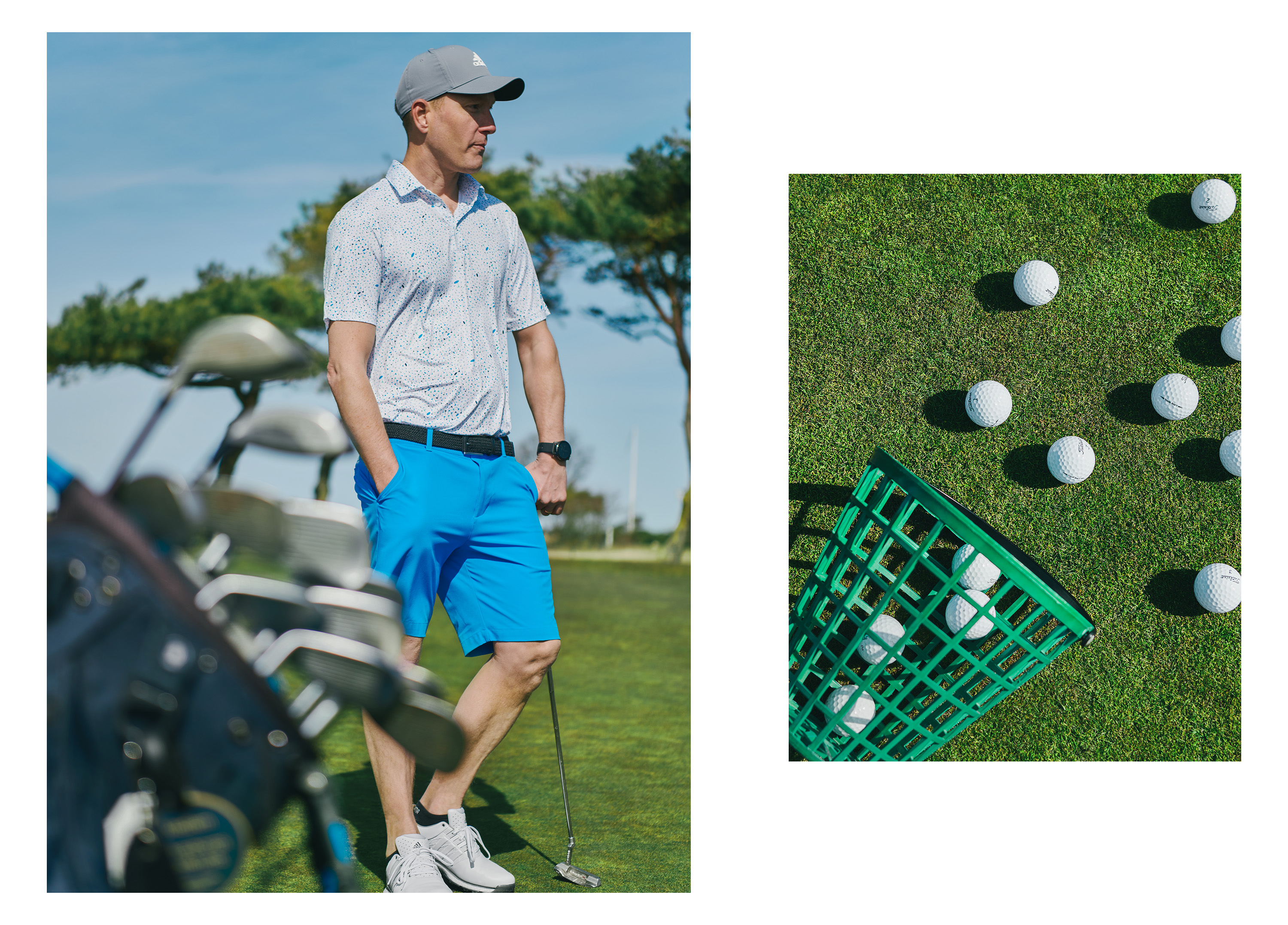


There’s never been a better time to learn golf as by nature golf is uniquely suited to the social distancing world that we are now all living in. Not only is it great exercise and a chance to get outdoors, but it’s also good for the mind due to it being a tough game. We spoke to golf expert and soon to be pro Christoffer Bring on how to get started.

Of course, no Beginner’s Guide to Golf would be complete without the important golf terms to memorise. Here’s a few to get started.
Golf Tee – the wooden peg you place your golf ball on at the start of the hole. The area in which you first play the ball at the start of the hole (A.K.A. the tee box) is also known as the golf tee
Fairway – the part of the golf course that leads to the green
The green – the soft, plush ground surrounding the hole
The rough – the wild area on either side of the fairway is Often filled with trees and long grass. (Usually just long grass - When trees come into play, we call it the woods)
Bunker – a sand-filled ditch. It usually surrounds the green.
Hazard – streams, ponds, bunkers, trees. Anything between you and successfully getting the golf ball in the hole.
Stroke – the swing made with the intent to hit the ball. You keep track of the score by counting strokes; a miss can still count as a stroke.
Scoring:
Ace – a hole in one
Albatross - 3 strokes under par (Can also be called a double eagle)
Eagle – 2 strokes under par
Birdie – 1 stroke under par
Par – the standard number of strokes it should take to get the golf ball from the tee to the hole
Bogey – 1 stroke above par
Double Bogey – 2 strokes above par
Triple Bogey – 3 strokes above par
Golf etiquette will change depending on where you are and who you are playing with, but for the most part these are the standards shared. Here are the top things you shouldn’t do on the golf course.
• Don’t talk during someone’s backswing.
• Don’t walk through someone else’s line (the line from their ball to the hole)
• Don’t hit the ball into the group ahead of you.
• Don’t get angry after every shot that isn’t perfect.
• Show up on time.
• Have fun.
• Ask a friend if you can borrow their golf clubs the first time.
• Rent golf clubs from the golf course clubhouse.
• Buy used golf clubs from second-hand sellers.
• Don’t buy an entire set. Get a wood, two or three irons, a sand wedge and a putter.
There’s always a dress code when you play golf. Some local courses aren’t as strict as playing in a bigger city, but here’s a cheat’s guide as to what you need to wear.
A collared shirt
Whether a short, or long-sleeved you should wear a polo shirt that has a collar. When the weather warms up go for materials that keep you dry and cool, but for most of the time look for something that is made of cotton to keep your warmer while you play. Going for the right material will make all the difference to how comfortable you feel on the course.
Jacket & sweaters
For most of the time playing in Scandinavia you will need to wear layers to keep you warm and dry. A sweater under a lightweight vest under a wind proof jacket will keep you cosy. Obviously, the more layers you have the more comfortable the game will be.
Shorts or slacks or a skirt
Whatever type of shorts, slacks or even a skirt for women, make sure they have a belt loop. There are styles that are made to perform better in hotter weather. Steer clear of white, the best colours to go for are beige, khaki, grey and tan. Once you have established yourself you can go for brighter colours.
There are three types of shoes made for golfers. The first type has steel spikes, which should be avoided as they won’t be allowed on amateur courses. Aim to buy shoes that have soft spikes, which are shoes that have had the steel spikes replaced so as not to tear up the course or are spikeless. These spikeless shoes have rubber studs which are great for people who feel pressure when wearing spiked shoes.
Belts and socks
You will have belt loops on your shorts, slacks or even skirt, so put on a belt. It finishes off the look and keeps it smart. White ankle socks are a good choice for socks.
Gloves
While optional, if you are starting to play often you will find yourself wanting a golf glove. Make sure you have the right size and remember that golfers wear gloves on the hand opposite their dominant hand. In other words, right-handed players wear gloves on their left hand and vice versa.
Hats
Baseball caps are typically seen on most golf courses. You can also wear visors, bucket hats or wide-brim hats. Remember not to wear your hat backward or while in the clubhouse or bar.

Golf is a difficult sport at first, so be persistent and patient if you really want to learn it.
Golf is a game of perfection and it is so technical, so it takes time to learn. Don’t give up after the first time you try it.
Do not play difficult courses from difficult tees until you are ready.
Get lessons from the teaching professional at the golf course you go to play.
Aim, don’t just swing.
Track your stats and your progress.